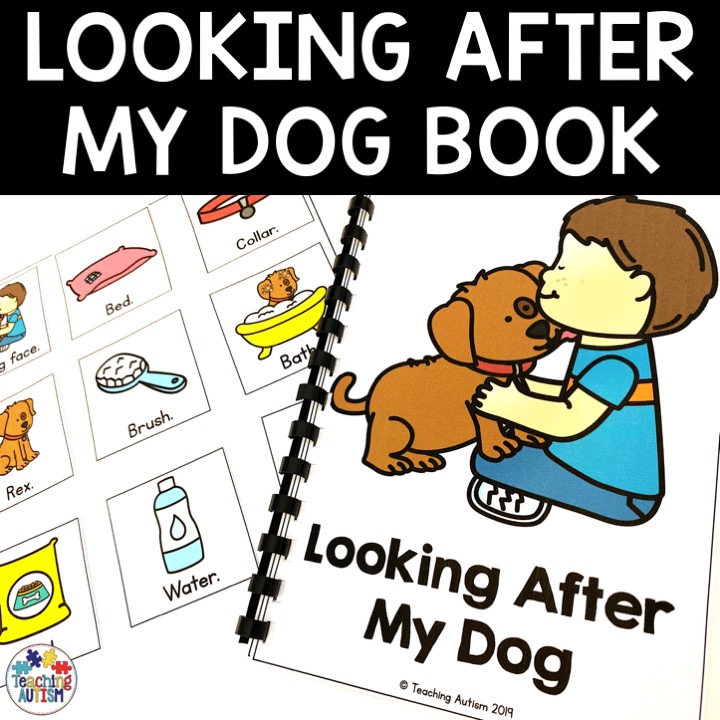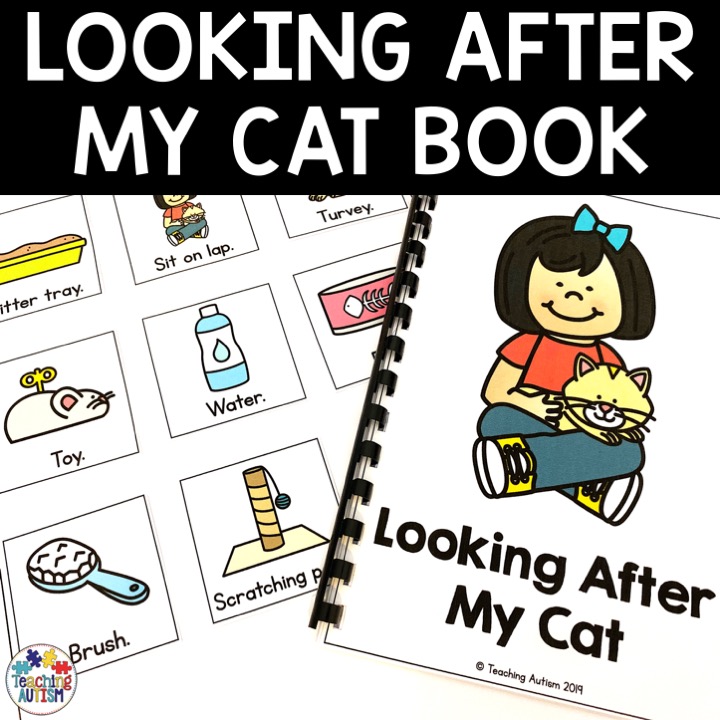Classroom Pet in Special Education
Having a classroom pet in special education and autism classrooms can be a very exciting experience. There’s the possibility of your students being able to work on a huge range of skills. But, it’s not all smooth sailing. And you’re probably sat wondering..
- Should I get a pet for the classroom?
- Which one should I get?
- What are some pros/cons of this?
- How will it benefit my students?
And all of those are great questions. They’re also ones that I get asked on a fairly regular basis. We’ve been through this whole process many times. And today, I want to share with you all some of my knowledge, and best tips about having a classroom pet in special education.
Should I Get a Pet?
Probably the most important question to get started with. Should you get a pet for your classroom? And this is down to you only. Nobody can make your mind up for you.
Having a pet in your classroom requires the same – if not more – responsibility as having one at home. And this will affect which type of pet you get for your classroom.
A pet in the classroom can be very beneficial for your students. It can make the room feel a lot more homely and safe. Your students can work on their independency and life skills – looking after pets is a huge one! There’s the opportunity for extended learning. You can learn about this type of animal, do projects on it and so much more.
Which Pet Should I Get?
This always reminds me of that picture book. But, it’s also a serious thing for you to think about. There’s a huge range of different pets that you COULD get for your classroom. But just because you can get them, doesn’t mean you should – not all are going to be suitable for your classroom and students. The types of pets you can get are;
- Hamster
- Gerbil
- Mouse
- Rat
- Chickens
- Fish
- Guinea Pig
- Bearded Dragon
- Gecko
- Chinchilla
- Rabbit
- Duck
- Hermit Crab
- Giant Snail
Obviously, that’s not a list of every pet you could get. But these are the main ones that are usually found in classrooms. The best thing to do, is think about each of these pets and do a process of elimination. For example, if you have students who are allergic to fur – you can cancel out hamster, gerbil, mouse, rat etc.
You may not have room to keep animals like ducks or chickens, so you can rule those out. You may not be able to afford the start-up and upkeep of animals like bearded dragons.
This process of elimination is a great way for you to work out which pets are most suitable. And if you’re left with more than 1 – you can always use this as an opportunity for your students to get involved and vote for which one they’d like as a classroom pet. You can take them to the pet shop and help them decide there, collate votes, and count them up. Again, all of these things are getting your students working on even more skills!
Pros and Cons
As with anything in life, there’s always going to be pros and cons of having a classroom pet. And I’ve put together the most common ones down below.
Pros
- Provides a huge range of learning opportunities in your classroom.
- Students will be able to work on vital skills.
- It will encourage your students to work on their independence.
- Observe life cycles in person.
- Gain real life experiences.
- Teaches responsibility.
- Perfect for your science goals.
- Teaches compassion.
Cons
- They can be expensive to buy.
- What will happen on weekends/holidays when school is closed?
- They may take up a lot of space – that you don’t have available.
- What happens if it becomes ill? Or even worse – dies?
- They can be expensive to keep – food etc.
- Some animals are very sensitive, and the classroom may not be the right environment for them.
- Students may be allergic or scared.
- Is there a risk of violence or aggression towards the animal?
Getting the Pet
So, you’ve decided that you are happy to get a pet for your classroom. You think it’ll be a positive experience for all involved. But, now you’re stuck. What are the next steps?
- First, speak to your management. Are there forms you need to fill in, like health and safety? Do you need to get permission? What procedures do you need to follow?
- Next, visit a pet shop. Talk to the workers there and they’ll be able to advise you which pet(s) they think is most suitable for your classroom environment.
- Write home to seek permission from your students families. Check for allergies or anything that you may need to be aware of.
- Take your students to the pet shop. How do they react around animals? Are they being responsible and caring? Can a member of staff teach them about how to look after the animals/care for them/hold them?
- Look at costings. How much will the pet cost up front with everything it needs? And how much will it cost each month moving forward? Who will pay for this? And how?
- Where will the pet live? What does it live in?
- Plan for weekends and holidays when school is shut. Where will the pet go? How will they get there?
Personal Experiences
I love to share personal experiences where possible. And I’ve had experience with a few different types of classroom pets, which I’ll share below.
Fish
The first classroom pet that we had were fish. And these aren’t as easy to maintain as everyone thinks. People were quick to suggest fish and say how easy they are and you just need to feed them, but that’s not true. And this is why I really encourage you to visit a pet shop to get all the information you need before purchasing a fish for classroom.
They’re also quite expensive to start up – but cheaper to maintain each month. For the start up, we bought the fish tank, treatment to go into the water, a filter, stones, decorations, real plants, fish and then food. Moving forward, we really only bought new filter sponges and food on a regular basis.
The students were really interested in the fish to start. But, they did become quickly bored of them. They would visit them and watch now and again. But, they weren’t overly keen. It also didn’t help that we had to keep the fish tank out of daily reach where it could get knocked over. And it had to be by a plug for the filter. It would also smell really bad when we changed the water – and the students really didn’t enjoy this.
One of our members of staff took the fish tank and fish home with her though and her family were really happy with them. So, there was no sad ending here! Fish just weren’t for our students.
Guineapigs
Guineapigs are adorable and so cuddly. But, they’re also a lot of hard work, and these are ones that we didn’t really find appropriate, for a number of reasons.
First, they can be quite expensive to purchase and set up. As well as maintain. You’re also going to have to deal with cleaning out the cage on a very regular basis. They have strict diets – and of course, they can bite. And this can be very stressful and frightening for students.
The students did enjoy putting food into the cage each day and changing the water of them. But, I just really didn’t feel like these were appropriate for us. However, they worked really well in an older classroom and the teacher would take them home regular.
Giant Snail
This one was actually loaned from a local pet shop. You can speak to your local pet shops and find out about loaning there as well and see if there’s anything they’re able to offer you.
This worked great because there was no financial outlay. The snail was huge – and this was a big interest to the students. They loved going to watch the snail and finding items to put into his tank. The pet shop can give you a list of items the snail likes – and you can make this a weekly scavenger hunt for your students to find the snail.
This was also easy to take home on weekends/holiday as it came in a transportable tank. It was perfect for our unit on mini-beasts and there were so many learning opportunities from this.
Overall, I think this was the best choice for classroom pets.
Decision Time
As you can see, different animals are suitable for different classrooms and environments. The biggest winner for us was the giant snail – and this was free too! It came on loan from a pet shop and it was a great pet for us to have.
But, now it’s decision time for you. Has this blog post helped you to make a decision about whether or not to have a classroom pet? Or do you already have one? Let us know in the comments your thoughts down below.
Helpful Resources
I love to teach my students important life skills where possible. And these adapted books for looking after your dog, or your cat are perfect! Check them out by clicking the images down below and trying them with your students too.


We also like to use this pet adapted book when we are talking about pets, and making decisions for if they’ll be the right pet for our classroom or not. And why.

And if you found this blog post helpful, please consider sharing it with your friends and colleagues on social media.








